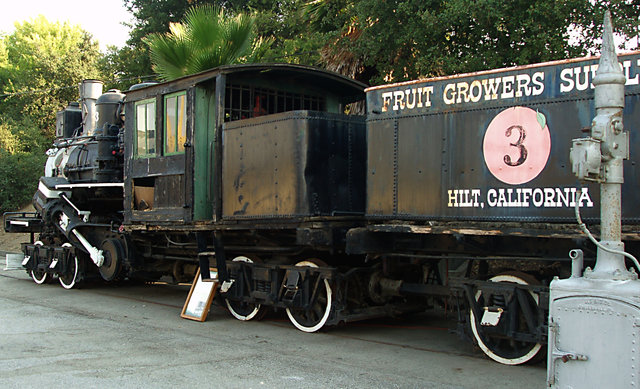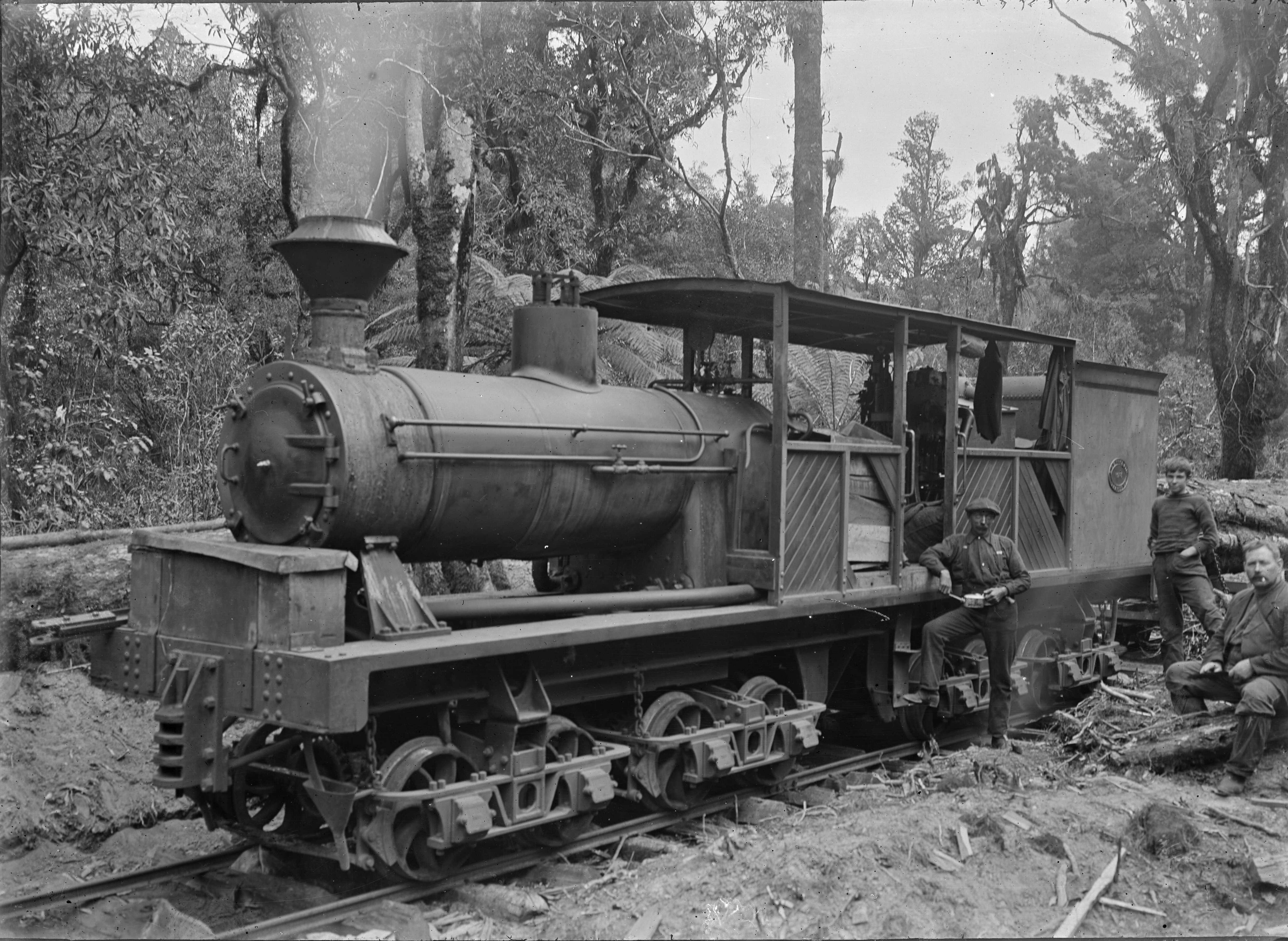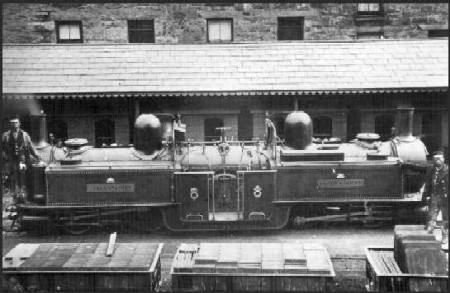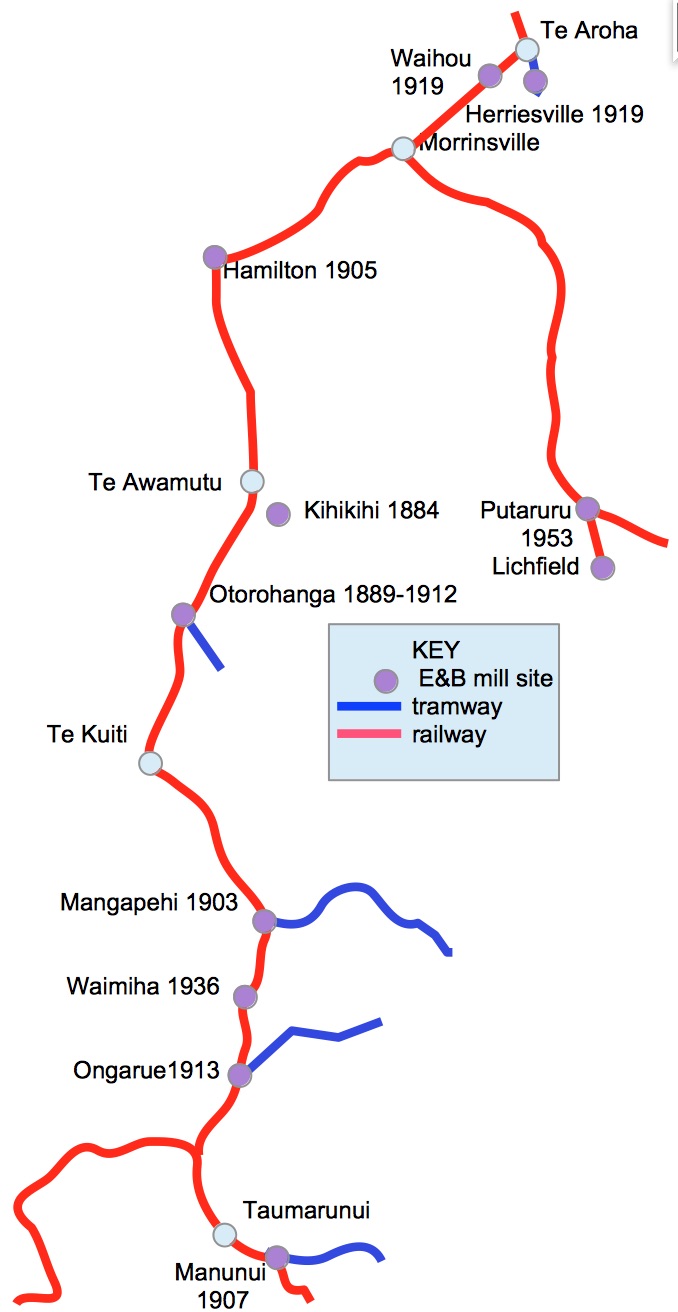|
West Coast Historical And Mechanical Society
The West Coast Historical and Mechanical Society is based at the Shantytown Heritage Park Shantytown Heritage Park, usually known as Shantytown, is a tourist attraction in the West Coast Region of the South Island of New Zealand. Located south of Greymouth, the Heritage Park opened in 1971 and consists of 30 re-created historic build .... The society has three steam locomotives and one diesel. One loco, Kaitangata (otherwise known as "''Katie''") is a 0-6-0st steam locomotive built by Sharp, Stewart & Co. in 1896. It is an improved version of the 88 F class locomotives. Locomotives and rolling stock The society has 5 steam locomotive plus a diesel shunter: * An ' A' class locomotive class locomotive (otherwise known as "''Opossum''") * Heisler 1494 * Climax 1203 * Kaitangata 4270 "Katie" * L 508 "Gertie" * TR 107 "Rosie" They also have in care of the remains of A 65 and two bush diesel locos from the Dispatch Foundry. Plus two other locos from the foundry with one on stat ... [...More Info...] [...Related Items...] OR: [Wikipedia] [Google] [Baidu] |
Locomotive NZR L 508 And Two Passenger Carriages At Shantytown Station
A locomotive or engine is a rail transport vehicle that provides the motive power for a train. If a locomotive is capable of carrying a payload, it is usually rather referred to as a multiple unit, motor coach, railcar or power car; the use of these self-propelled vehicles is increasingly common for passenger trains, but rare for freight (see CargoSprinter). Traditionally, locomotives pulled trains from the front. However, push-pull operation has become common, where the train may have a locomotive (or locomotives) at the front, at the rear, or at each end. Most recently railroads have begun adopting DPU or distributed power. The front may have one or two locomotives followed by a mid-train locomotive that is controlled remotely from the lead unit. __TOC__ Etymology The word ''locomotive'' originates from the Latin 'from a place', ablative of 'place', and the Medieval Latin 'causing motion', and is a shortened form of the term ''locomotive engine'', which was firs ... [...More Info...] [...Related Items...] OR: [Wikipedia] [Google] [Baidu] |
Climax Locomotive Works
The Climax Locomotive Works (formerly the Climax Manufacturing Company) was a manufacturer of Climax geared steam locomotives between 1888 and 1928. It was based in Corry, Pennsylvania. In fiction * Ferdinand is based on the Climax Locomotive Class in Thomas and Friends ''Thomas & Friends'' (originally known as ''Thomas the Tank Engine & Friends'' and later ''Thomas & Friends: Big World! Big Adventures!'') is a British children's television series that aired across 24 series from 1984 to 2021. Based on ''The ... Misty Island Rescue. Defunct locomotive manufacturers of the United States Industrial buildings and structures in Pennsylvania Corry, Pennsylvania {{steam-loco-stub ... [...More Info...] [...Related Items...] OR: [Wikipedia] [Google] [Baidu] |
Heritage Railways In New Zealand
Heritage may refer to: History and society * A heritage asset is a preexisting thing of value today ** Cultural heritage is created by humans ** Natural heritage is not * Heritage language Biology * Heredity, biological inheritance of physical characteristics * Kinship, the relationship between entities that share a genealogical origin Arts and media Music * ''Heritage'' (Earth, Wind & Fire album), 1990 * ''Heritage'' (Eddie Henderson album), 1976 * ''Heritage'' (Opeth album), 2011, and the title song * Heritage Records (England), a British independent record label * Heritage (song), a 1990 song by Earth, Wind & Fire Other uses in arts and media * ''Heritage'' (1935 film), a 1935 Australian film directed by Charles Chauvel * ''Heritage'' (1984 film), a 1984 Slovenian film directed by Matjaž Klopčič * ''Heritage'' (2019 film), a 2019 Cameroonian film by Yolande Welimoum * ''Heritage'' (novel), a ''Doctor Who'' novel Organizations Political parties * Heritage (Armenia) ... [...More Info...] [...Related Items...] OR: [Wikipedia] [Google] [Baidu] |
Christchurch
Christchurch ( ; mi, Ōtautahi) is the largest city in the South Island of New Zealand and the seat of the Canterbury Region. Christchurch lies on the South Island's east coast, just north of Banks Peninsula on Pegasus Bay. The Avon River / Ōtākaro flows through the centre of the city, with an urban park along its banks. The city's territorial authority population is people, and includes a number of smaller urban areas as well as rural areas. The population of the urban area is people. Christchurch is the second-largest city by urban area population in New Zealand, after Auckland. It is the major urban area of an emerging sub-region known informally as Greater Christchurch. Notable smaller urban areas within this sub-region include Rangiora and Kaiapoi in Waimakariri District, north of the Waimakariri River, and Rolleston and Lincoln in Selwyn District to the south. The first inhabitants migrated to the area sometime between 1000 and 1250 AD. They hunted moa, which led ... [...More Info...] [...Related Items...] OR: [Wikipedia] [Google] [Baidu] |
A & G Price
A & G Price Limited is an engineering firm and locomotive manufacturer in Thames, New Zealand founded in 1868. History A & G Price was established in 1868 in Princes Street, Onehunga by Alfred Price and George Price, two brothers from Stroud, Gloucestershire. They built almost 100 flax-milling machines in their first year.Book Reviews ''Rails'' June 1983 page 22 The brothers also built machinery for gold miners. They moved to the Coromandel Gold Rushes in 1871 setting up premises in Beach Road, Thames and closing the Onehunga works in 1873 after building 10 coaches and 12 trucks there for the Public Works Department. The firm's ownership was transferred to a limited liability company in 1907. Ownership A & G Price Limited remained under family management until November 1949 when it was bought by Wellington engineers, William Cable & Company. The two companies then exchanged board members but kept their separate identities. Cable bought Downer & Co in 1954 and in 1964 Willia ... [...More Info...] [...Related Items...] OR: [Wikipedia] [Google] [Baidu] |
Avonside Engine Company
The Avonside Engine Company was a locomotive manufacturer in Avon Street, St. Philip's, Bristol, England between 1864 and 1934. However the business originated with an earlier enterprise Henry Stothert and Company. Origins The firm was originally started by Henry Stothert in 1837 as Henry Stothert and Company. Henry was the son of George Stothert (senior), founder of the nearby Bath engineering firm of Stothert & Pitt. Henry's brother, also named George, was manager of the same firm. The company was given an order for two broad gauge () Firefly class express passenger engines ''Arrow'' and ''Dart'', with driving wheels, delivered for the opening of the Great Western Railway (GWR) from Bristol to Bath on 31 August 1840. This was soon followed by an order for eight smaller Sun class engines with driving wheels. Stothert, Slaughter and Company Edward Slaughter joined the company in 1841, when it became known as Stothert, Slaughter and Company. By 1844 their works were n ... [...More Info...] [...Related Items...] OR: [Wikipedia] [Google] [Baidu] |
Sharp, Stewart And Company
Sharp, Stewart and Company was a steam locomotive manufacturer, initially located in Manchester, England. The company was formed in 1843 upon the demise of Sharp, Roberts & Co.. It moved to Glasgow, Scotland, in 1888, eventually amalgamating with two other Glaswegian locomotive manufacturers to form the North British Locomotive Company. Early days Iron merchant Thomas Sharp and mechanical engineer Richard Roberts first formed a partnership, Sharp, Roberts & Co. (about which, see also company section in article on Roberts), to manufacture textile machinery and machine tools. They opened the Atlas Works in Manchester in 1828. They had built a few stationary steam engines, and in 1833 built a locomotive, ''Experiment'' for the Liverpool and Manchester Railway. It was a four-wheeled 2-2-0 with vertical cylinders over the leading wheels. After a number of modifications, three similar locomotives (Britannia, Manchester, and ''Hibernia'') were built in 1834 for the Dublin and King ... [...More Info...] [...Related Items...] OR: [Wikipedia] [Google] [Baidu] |
Heisler Locomotive
The Heisler locomotive is one of the three major types of geared steam locomotives and the last to be patented. Charles L. Heisler received a patent for the design in 1892, following the construction of a prototype in 1891. Somewhat similar to a Climax locomotive, Heisler's design featured two cylinders canted inwards at a 45-degree angle to form a 'V-twin' arrangement. Power then went to a longitudinal drive shaft in the center of the frame that drove the outboard axle on each powered truck through bevel gears in an enclosed gearcase riding on the axle between the truck frames. The inboard axle on each truck was then driven from the outboard one by external side (connecting) rods. In 1897, Heisler received a patent on a three-truck locomotive.Charles L. Heisler, LocomotiveU.S. Patent 585,031 June 22, 1897. As with Class C Shay locomotives, the tender rode on the third truck. Unlike the Shay, Heisler's design did not have a continuous string of line shafting running the lengt ... [...More Info...] [...Related Items...] OR: [Wikipedia] [Google] [Baidu] |
Ellis And Burnand
Ellis and Burnand was a New Zealand sawmilling and timber retailing company, formed by businessman John William Ellis and engineer Harry Burnand in 1891. Ellis and Burnand Ltd was incorporated in 1903. They were responsible for felling much of the native bush in the southern Waikato and northern Manawatu-Whanganui regions. Their operations expanded initially to supply the timber needs of the North Island Main Trunk railway as it was extended south. Once the railway opened, new mills were built to exploit previously hard to access areas. Fletcher Holdings bought the company in 1990, rebranding it as PlaceMakers. Ellis & Burnand's cutting sites were linked to their sawmills by bush tramways, one of which forms the southern end of the Timber Trail cycleway, opened in 2013. Origins Ellis's first venture into timber milling seems to have started at Ōrākau, near Kihikihi (where he ran a store) in 1884, though the sources differ on several dates in this period, some saying it ... [...More Info...] [...Related Items...] OR: [Wikipedia] [Google] [Baidu] |
Matapuna Railway Station
Matapuna had several sidings on the North Island Main Trunk line, in the Ruapehu District of New Zealand, serving the east Taumarunui suburb on the north bank of the Whanganui River. It was north west of Manunui and east of Taumarunui. Work was largely complete by May 1903, and freight was handled from 22 June 1903. A fixed signal was placed at the station and a distant at the bridge in 1917 and the ballast pit siding was interlocked by tablet in 1918. A racecourse opened to the south of the bridge in 1916 and some trains served the course on race days, though no platform appears on aerial photos and only the ballast pit was mapped. Before the railway came, a Ngāti Hāua kāinga was on the south side of the river, which could be forded, except when in flood. Matapuna Bridge Matapuna Bridge, to the south east of the station, takes the NIMT over the Whanganui River. It has three steel through trusses, plus a steel girder at each end, totalling long. It was built from ... [...More Info...] [...Related Items...] OR: [Wikipedia] [Google] [Baidu] |
Greymouth
Greymouth () (Māori: ''Māwhera'') is the largest town in the West Coast region in the South Island of New Zealand, and the seat of the Grey District Council. The population of the whole Grey District is , which accounts for % of the West Coast's inhabitants. The Greymouth urban area had an estimated population of A large proportion of the District, 65%, is part of the Conservation Estate owned and managed by the Department of Conservation making Greymouth a natural centre for walkers and trampers. Location The town is located at the mouth of the Grey River, on a narrow coastal plain close to the foot of the Southern Alps. In clear weather, Aoraki / Mount Cook can be clearly seen to the south from near the town. The mouth of the river divides the town into three areas: Blaketown, close to the river's mouth on the south bank; Karoro, to the southeast, separated from Blaketown by a series of small estuarine lagoons; and Cobden, formerly a separate town, on the river's north ... [...More Info...] [...Related Items...] OR: [Wikipedia] [Google] [Baidu] |
Shantytown, New Zealand
Shantytown Heritage Park, usually known as Shantytown, is a tourist attraction in the West Coast Region of the South Island of New Zealand. Located south of Greymouth, the Heritage Park opened in 1971 and consists of 30 re-created historic buildings making up a 19th-century gold-mining town. The town is surrounded by native forest, and is one of the region's most popular attractions. History Born out of the desire of the Greymouth community to preserve the West Coast gold-mining history, Shantytown was started by a group of local enthusiasts forming the West Coast Historical and Mechanical Society in 1968. Shantytown Heritage Park opened to the public on 23 January 1971. Most of the effort that has gone into the creation of Shantytown has been by volunteers and donated labour. Over the years, a collection of thousands of artefacts, ranging from gold-mining equipment to early settlers furniture, everyday items and clothing, as well as photographs, has been donated and collected f ... [...More Info...] [...Related Items...] OR: [Wikipedia] [Google] [Baidu] |









